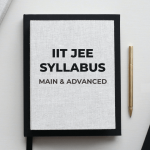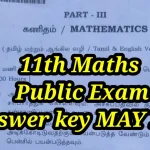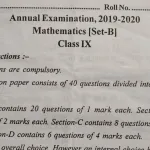Sample Questions and Answers for Class 7 – BODMAS Rule
-
What is the result of 7 + 3 × 2?
Answer: 13 (According to BODMAS, first multiply 3 × 2, then add 7). -
Evaluate 6 + (3 × 2) – 4.
Answer: 8 (First, multiply 3 × 2 to get 6, then perform the addition and subtraction in sequence). -
Simplify 4 × (5 + 3).
Answer: 32 (First, solve the expression inside the parentheses, then multiply by 4). -
What is 8 – 2 × (4 + 1)?
Answer: 0 (First, solve the parentheses, then multiply 2 × 5, and finally subtract from 8). -
Find the value of 9 ÷ 3 + 2.
Answer: 5 (Divide first, then add 2). -
Solve 6 × (2 + 3) – 5.
Answer: 25 (Solve inside the parentheses first, then multiply, and subtract). -
What is 10 ÷ 2 + 6?
Answer: 11 (First, divide 10 ÷ 2, then add 6). -
Evaluate (7 + 3) × 4.
Answer: 40 (Solve inside the parentheses, then multiply by 4). -
What is 15 – 3 × 4 ÷ 2?
Answer: 9 (Follow BODMAS rules, first perform multiplication and division from left to right, then subtract). -
Simplify 12 ÷ (3 × 2).
Answer: 2 (First, solve the parentheses, then divide). -
What is 3 + 4 × 2 – 1?
Answer: 10 (Perform multiplication first, then proceed with addition and subtraction). -
Simplify 8 ÷ 2 × (3 + 1).
Answer: 16 (First, solve inside the parentheses, then follow the BODMAS order). -
What is 5 + 3 × (7 – 4)?
Answer: 14 (First, solve inside the parentheses, then multiply by 3, and add 5). -
Evaluate 10 ÷ 2 × 5 – 1.
Answer: 24 (First, divide and multiply, then subtract). -
Simplify (9 + 3) × 2.
Answer: 24 (First, solve inside the parentheses, then multiply). -
What is 4 × (6 + 3) ÷ 2?
Answer: 18 (First, solve inside the parentheses, then multiply and divide). -
Solve 15 – 5 × 2 + 3.
Answer: 8 (Follow BODMAS: first multiplication, then addition and subtraction). -
What is (8 – 4) × (3 + 2)?
Answer: 20 (First, solve both parentheses, then multiply the results). -
Evaluate 7 × (2 + 3) ÷ 5.
Answer: 7 (First, solve inside the parentheses, then multiply and divide). -
Simplify (12 ÷ 2) + 5.
Answer: 11 (First, divide 12 ÷ 2, then add 5).
Math Questions (Class 7)
-
What is 12 + 4 × 3?
Answer: 24. -
Evaluate 5 × (8 + 2).
Answer: 50. -
Simplify 9 ÷ (4 + 1).
Answer: 1.8. -
What is 3 × 2 + (4 × 2)?
Answer: 14. -
Simplify 18 ÷ 3 + 2.
Answer: 8. -
Evaluate (6 + 2) × (5 – 3).
Answer: 16. -
What is 7 + 8 ÷ 4 × 3?
Answer: 13. -
Simplify 9 + 6 ÷ 3 × 5.
Answer: 21. -
Evaluate 12 × (3 + 1) ÷ 4.
Answer: 12. -
What is (5 + 7) × (2 – 1)?
Answer: 12. -
Simplify 2 × 5 + (7 – 3).
Answer: 15. -
Evaluate 18 ÷ 2 + 4.
Answer: 13. -
What is 7 × (2 + 4)?
Answer: 42. -
Simplify (6 × 3) ÷ 9.
Answer: 2. -
What is (8 + 4) ÷ (3 + 3)?
Answer: 2. -
Evaluate 4 × (5 – 1) ÷ 2.
Answer: 8. -
What is 3 + 9 ÷ 3?
Answer: 6. -
Simplify 5 + 2 × (3 + 2).
Answer: 15. -
Evaluate (15 ÷ 3) × (2 + 3).
Answer: 25. -
What is 8 × (4 – 2)?
Answer: 16.
Other Subjects Examples (Class 7)
Science:
-
If an object weighs 6kg on Earth, how much would it weigh on the Moon?
Answer: 1 kg (on the Moon, gravity is about 1/6th of Earth’s). -
How many grams are in 2.5 kilograms?
Answer: 2500 grams. -
What is the boiling point of water in Fahrenheit?
Answer: 212°F. -
What is the chemical symbol for water?
Answer: H₂O. -
If an object travels 20 meters in 4 seconds, what is its speed?
Answer: 5 m/s.
Social Studies:
-
Who was the first President of India?
Answer: Dr. Rajendra Prasad. -
What year did India gain independence?
Answer: 1947. -
Which river is known as the lifeline of Egypt?
Answer: The Nile River. -
Who wrote the national anthem of India?
Answer: Rabindranath Tagore. -
Which country is known as the Land of the Rising Sun?
Answer: Japan.
Recommended Indian Books for BODMAS Questions for Class 7
-
Mathematics for Class 7 by R.S. Aggarwal – S. Chand Publishing
Content: This book provides a wide range of BODMAS questions, focusing on simplification, order of operations, and real-life applications. It contains practice exercises and problems to reinforce concepts. -
Mental Maths – Class 7 by M.L. Aggarwal – Amit Publishers
Content: The book emphasizes quick mental calculations using the BODMAS rule, helping students improve their speed and accuracy in problem-solving. -
Mathematics Class 7 by NCERT – National Council of Educational Research and Training
Content: This textbook follows a structured approach, offering numerous examples and exercises on BODMAS that help build a strong foundation in basic arithmetic and algebra. -
Quick Solutions: Mathematics Class 7 by Oswal Publishers – Oswal Publishers
Content: The book is filled with a variety of BODMAS problems, including word problems and puzzles, to enhance logical thinking and problem-solving skills. -
Success in Mathematics – Class 7 by M.L. Aggarwal – Amit Publishers
Content: It covers BODMAS operations in-depth, presenting both simple and challenging questions for students to apply their understanding of order of operations. -
Learn Maths – Class 7 by S.K. Gupta and Anubhuti Gangal – Laxmi Publications
Content: This book provides step-by-step solutions and a plethora of BODMAS-based questions that ensure students understand the concept thoroughly. -
Tricks in Mathematics for Class 7 by Dinesh Khattar – Dhanpat Rai Publications
Content: The book provides useful shortcuts and tricks for solving BODMAS-related questions faster, perfect for students who want to master mental math techniques. -
R.D. Sharma Mathematics Class 7 by R.D. Sharma – Dhanpat Rai Publications
Content: Known for its clear explanation, this book covers a wide variety of questions based on BODMAS rules, ranging from basic to complex problems, ideal for students preparing for exams. -
Target Class 7 Mathematics by R.K. Agarwal – S. Chand Publishing
Content: This book offers a range of problems on BODMAS, including both theoretical and applied questions, perfect for students who want to practice under timed conditions. -
Concepts of Mathematics – Class 7 by M. S. Chauhan – S. Chand Publishing
Content: It provides an extensive collection of exercises focusing on BODMAS, aimed at developing conceptual understanding through practical application. -
Foundation Mathematics Class 7 by Cengage Learning – Cengage Learning India
Content: This book includes an extensive range of questions on BODMAS, ensuring that students learn and apply the order of operations in algebraic contexts. -
Comprehensive Mathematics Class 7 by S.K. Jain – Dhanpat Rai & Sons
Content: A detailed collection of exercises that focus on simplifying algebraic expressions and equations using the BODMAS rule, along with problem-solving tips. -
Mathematics Class 7 (ISC) by G.S. Paliwal – Oxford University Press
Content: This book combines theory with practice, offering exercises on BODMAS that help students grasp the order of operations in various contexts, including algebra and arithmetic. -
BODMAS Made Easy for Class 7 by Amit Agarwal – Target Publications
Content: A focused book on simplifying expressions using BODMAS, including worked-out examples and numerous exercises for practice. -
Maths Lab Manual Class 7 by R.K. Bansal – S. Chand Publishing
Content: This manual contains hands-on activities, experiments, and exercises to help students apply the BODMAS rule in practical scenarios. -
BODMAS Workbook for Class 7 by Pradeep Publishing – Pradeep Publications
Content: The workbook contains a variety of practice questions designed to test the students’ skills in applying the BODMAS rule to real-life mathematical problems. -
Step by Step Mathematics Class 7 by P.K. Gupta – Laxmi Publications
Content: Step-by-step solutions and BODMAS questions from easy to difficult, allowing students to progress gradually in mastering the concepts. -
Mathematics Practice Book for Class 7 by S. Chand – S. Chand & Co
Content: This practice book is filled with exercises on BODMAS operations, including word problems and puzzles, to build problem-solving skills. -
New Mathematics Class 7 by S.K. Sharma – Dhanpat Rai & Sons
Content: This textbook includes an extensive range of BODMAS-related questions, with a strong focus on practical applications in daily life. -
Mathematics Class 7 – Workbook by R. Gupta – R. Gupta Educational Publishers
Content: The workbook provides a comprehensive collection of BODMAS questions and solutions, designed to help students solidify their understanding and boost exam performance.
BODMAS Questions for Class 7: Master the Art of Mathematical Operations
BODMAS is a fundamental concept in mathematics that every student should master by class 7. It stands for Brackets, Orders, Division, Multiplication, Addition, and Subtraction, and dictates the order in which operations are performed in a mathematical expression. The rules ensure that calculations are done consistently and correctly, regardless of the complexity of the expression.
At the core of the BODMAS rule is the hierarchy of operations. Brackets should always be simplified first, followed by orders (which refer to powers or roots). After that, division and multiplication are performed from left to right, and finally, addition and subtraction are handled, again from left to right.
For class 7 students, the key is practice. The more students practice BODMAS questions, the more confidently they will approach even the most complex problems. Class 7 textbooks often provide ample opportunities to test one’s understanding, with exercises ranging from simple arithmetic calculations to problems that involve algebraic expressions.
A wide range of questions can be encountered, such as evaluating expressions like 7 + 3 × 2, where students must first multiply before adding. Others may involve multiple operations and more complicated parentheses, challenging students to apply BODMAS in a more integrated manner. For example, in the expression (5 + 2) × 3 ÷ 2, students need to solve the operation inside the brackets first, then follow the rest of the rule.
To enhance understanding, it’s advisable to work through various problem types. Some exercises might ask students to solve equations using BODMAS, while others may involve real-world word problems that require a strategic application of the rule. For instance, a question like “If a store sells 3 items at $10, $15, and $20, what is the total cost after a 10% discount?” will involve multiple steps and require knowledge of both BODMAS and percentages.
Additionally, to strengthen mental math skills, students should practice solving BODMAS questions without a calculator. This will not only increase their calculation speed but also boost their overall problem-solving ability.
Books focusing specifically on BODMAS for class 7 provide exercises that vary in difficulty, ensuring that students are progressively challenged as they master the skill. These books often offer comprehensive solutions, which are essential for understanding the reasoning behind each step. Whether it’s solving simple expressions or more complex equations, the key lies in understanding the BODMAS rule and applying it effectively.
FAQ for BODMAS Questions for Class 7
1. What is the BODMAS rule?
BODMAS stands for Brackets, Orders, Division, Multiplication, Addition, and Subtraction. It is the order in which mathematical operations must be performed in an expression.
2. Why is the BODMAS rule important for class 7 students?
It ensures that mathematical expressions are solved in a standard order, preventing errors in calculations and helping students understand complex mathematical problems.
3. How do I know which operation to perform first in BODMAS?
First, solve any operations inside brackets. Next, solve any exponents (orders). After that, perform division and multiplication from left to right, followed by addition and subtraction from left to right.
4. Can BODMAS be used in algebraic expressions?
Yes, BODMAS is crucial for simplifying algebraic expressions, where operations are combined in equations that require precise order of operations.
5. Are there any tricks for solving BODMAS problems faster?
Regular practice is key. However, focusing on solving simpler problems first and building up to more complex ones can help improve both speed and accuracy.
Latest Posts
- Step-by-step guide to download and apply for jee mains admit card 202
- Comprehensive 2025 government holidays and recruitment details for job seekers
- JEE Mains Admit Card 2025: Your Step-by-Step Guide to Downloading the Hall Ticket
- Everything You Need to Know About 2025 Government Holidays Recruitment
- Comprehensive Guide to rrb d group recruitment 2025 – Eligibility, Vacancies, and Application
- Detailed guide to nps trust recruitment 2025 vacancies, eligibility and apply process
- Comprehensive guide to hpcl recruitment 2025 notification, vacancies, and application process
- ignou bed admission 2025 complete recruitment guide with eligibility and process
- Comprehensive Guide to Indian Army Agniveer Recruitment 2025 Notification and Jobs
- Everything You Must Know About CBSE Board Exams 2025 Changes & New Rules





